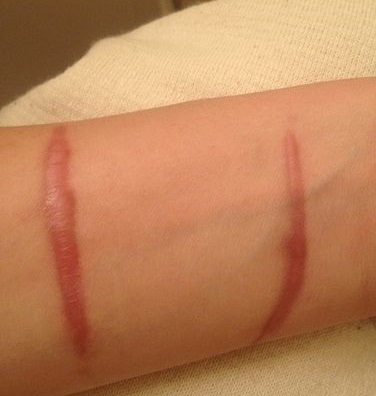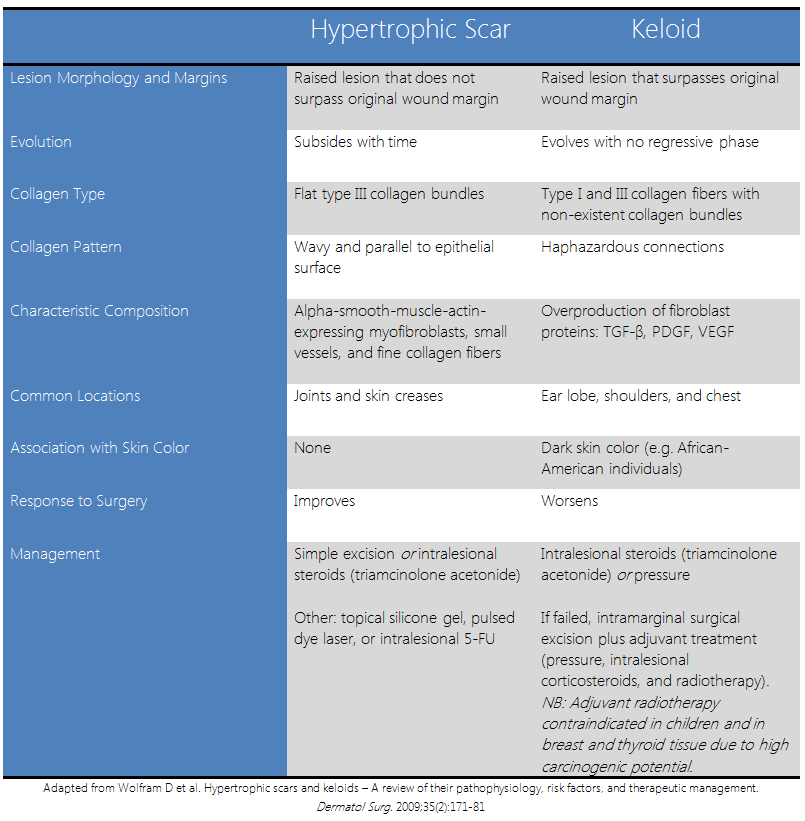WBR0843
Jump to navigation
Jump to search
| Author | [[PageAuthor::Yazan Daaboul, M.D. (Reviewed by Yazan Daaboul, M.D.)]] |
|---|---|
| Exam Type | ExamType::USMLE Step 1 |
| Main Category | MainCategory::Pathology |
| Sub Category | SubCategory::Dermatology |
| Prompt | [[Prompt::A 28-year-old man presents to the dermatology clinic with a lesion on his left forearm. Upon further questioning, he informs the physician that he sustained 2 burns in his left forearm 1 year ago; and the current lesions developed at the sites of the previous burn wounds. On physical examination, the physician notes 2 raised pink lesions along the left forearm as shown in the image below. Which of the following is an appropriate therapeutic option for this patient's condition? |
| Answer A | AnswerA::Simple excision |
| Answer A Explanation | AnswerAExp::Simple excision alone is often considered a first line therapeutic option for patients with hypertrophic scar, but not keloids. |
| Answer B | AnswerB::Systemic corticosteroids |
| Answer B Explanation | AnswerBExp::Systemic corticosteroids are not helpful for the treatment of hypertrophic scars or keloids. |
| Answer C | AnswerC::Topical corticosteroids |
| Answer C Explanation | AnswerCExp::Topical corticosteroids are not helpful for the treatment of hypertrophic scars or keloids. |
| Answer D | AnswerD::Neoadjuvant radiotherapy |
| Answer D Explanation | [[AnswerDExp::Hypertrophic scars do not usually require radiotherapy. For keloids, neither neoadjuvant (before surgery) radiotherapy nor radiotherapy alone is a good therapeutic option. Instead, adjuvant radiotherapy (following intramarginal excision) is often useful.]] |
| Answer E | AnswerE::Systemic chemotherapy |
| Answer E Explanation | AnswerEExp::Intralesional chemotherapy may be effective for the treatment of hypertrophic scars or keloids. In contrast, systemic chemotherapy is not a therapeutic option for hypertrophic scars or keloids |
| Right Answer | RightAnswer::A |
| Explanation | [[Explanation::The patient is presenting with a hypertrophic scar. While intralesional corticosteroids are treatment options for both hypertrophic scars and keloids, simple excision alone is often considered a first line therapeutic option for patients with hypertrophic scar, but not keloids. The following table compares hypertrophic scars with keloids and demonstrates the optimal therapeutic options for both lesions.
|
| Approved | Approved::No |
| Keyword | WBRKeyword::Hypertrophic scar, WBRKeyword::Keloid, WBRKeyword::Scar, WBRKeyword::Intralesional corticosteroids, WBRKeyword::Corticosteroids, WBRKeyword::Steroids, WBRKeyword::Treatment, WBRKeyword::Burn |
| Linked Question | Linked:: |
| Order in Linked Questions | LinkedOrder:: |

